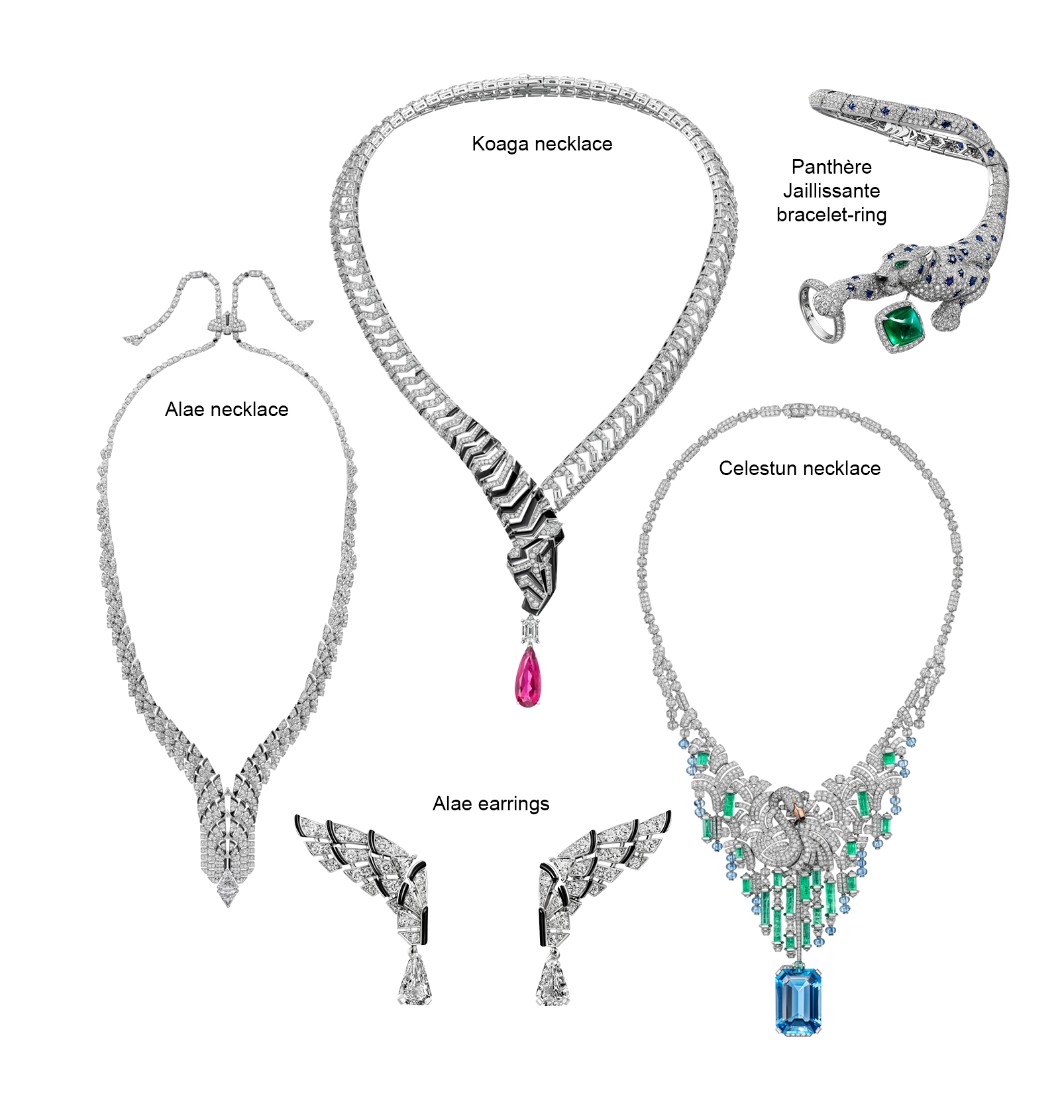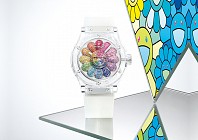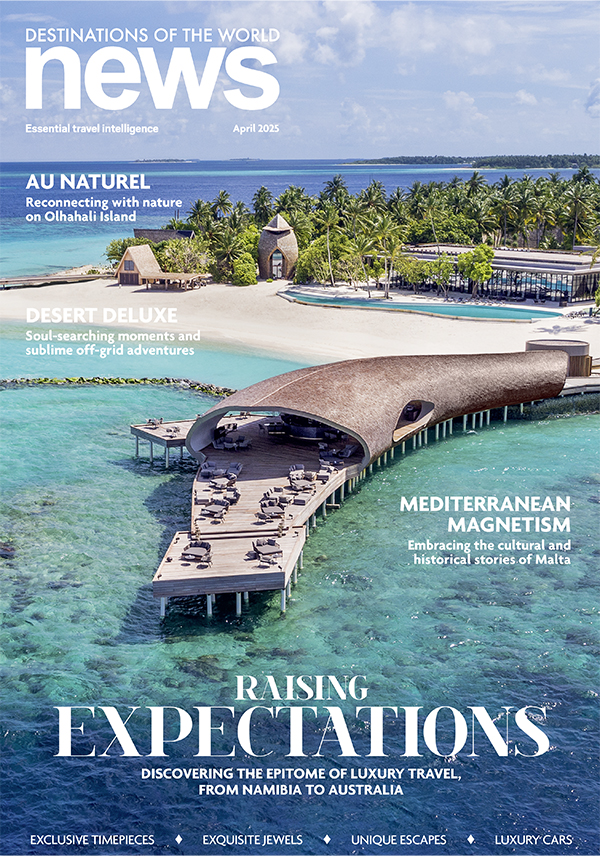The intricate rose gold links on Cartier’s Mochelys necklace showcase abstract grandeur as they extend towards a crescendo at the breathtaking 71.90-carat rubellite that makes up the centrepiece of the precious artefact. It’s impressive enough, but look closer, maybe even a little longer, just above the gemstone, a pattern of diamond and rubellite scales make up the body of a turtle, cleverly concealed amongst the pink gold. Cartier injects further playfulness by allowing the creature to be removed from its decadent hiding place to be worn as a brooch, transforming the turtle’s clandestine destiny to one where the creature is the master of a new story.
This majestic journey of discovery runs throughout Cartier’s new 87-piece Nature Sauvage high jewellery collection. The grand reveal of the pieces, at Vienna’s historic Museum of Applied Arts (MAK), amused guests trying to guess which animal was portrayed in each piece – be it in a figurative or more abstract manner. The Maison pays homage to real and mythical animals alike in this game of hide and seek, some depictions are more subtle than others; search out the secret beetle that has just landed on the clasp of the necklace, made up of white gold, onyx and diamond geometric patterns, or the reptile-like Scutella ring, cut to recreate the rough scales of a crocodile, using a combination of emerald and brilliant-cut diamonds.
Easier to spot, amongst the black and white stripes of the striking Koaga necklace, is the head of a zebra, which holds an emerald-cut diamond and a 6.25-carat pear-shaped rubellite in its mouth, or the Amphista necklace’s two diamond snakes who between them carry nine octagonal emeralds that total 14.72 carats. The Celestun neck piece showcases a Cartier regular; the flamingo, nestled on a myriad of emeralds and aquamarine that evoke the reeds and waters of the animal’s natural environment, while a dragon holds court on the Tatsu necklace, a pendant adorned with two rubies dangling from its mouth.

The panther, the most familiar species in the Cartier menagerie since its debut in 1914, makes 13 appearances in the Nature Sauvage collection. Sitting amidst the ice-like geometric structure of the Panthère des Glaces necklace, the white gold and diamond creature, with sapphire spots, emerald eyes and onyx nose, is one of the least subtle of the beasts on show – paws and facial features almost life-like. The panther is also the main protagonist in the Panthère Jaillissante bracelet-ring, one of the highlights of the whole collection, and a first for Cartier in producing this type of intricate hybrid piece. The anatomy of the animal is a masterclass in craftsmanship – the panther outstretched, paw on the body of the ring, guarding the 8.65-carat emerald.
This collection, which took three years to produce, shows us a transforming world. We meet some of the animals in their natural habitat, while others appear in more urban, cityscape settings – depicted by the Art Deco and geometric designs. We see the beasts hide, and we see them proudly pose, but ultimately, we see them telling the diverse tales of nature, and showing how those stories can be surprising and fluid. These exquisite pieces are heirlooms in the making, indeed.
Cartier.com











